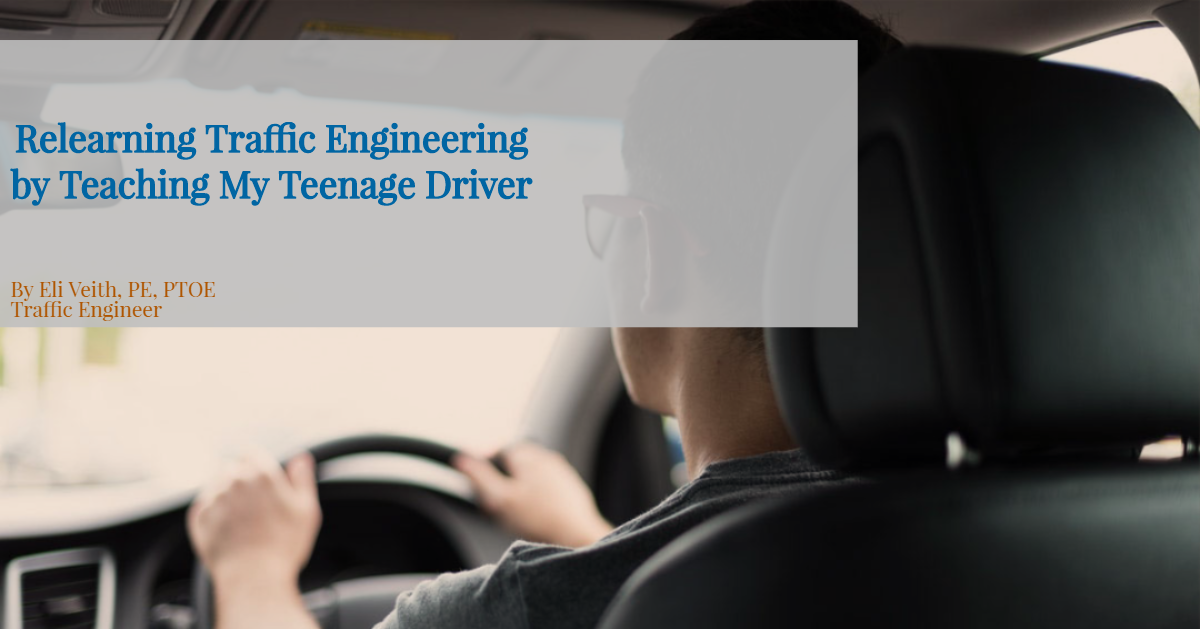By: Eli Veith, PE, PTOE
Traffic Engineer
May 13, 2019
“Watch out for this guy, he probably doesn’t notice his lane is ending”
Sure enough, the pickup gets almost all the way to the exit then moves over in front of us. Forewarned, my 16-year-old son has given extra space and doesn’t even have to tap the brakes, while I get to sit by, smugly enjoying my predictive skills. But I also think of how some GDOT engineers with years of experience and training had sat down years ago and designed all the proper signs and marking for that exit ramp, only to have their work ignored by a guy texting until it was almost too late. How much more work do we need to do to keep drivers safe when their eyes aren’t always on the road? To borrow from George Carlin: think of how bad the average driver is, then realize that half of them are below that average. Helping my son learn how to drive has included a lot of important lessons for me also, forcing me to refocus on a lot of the basics of traffic engineering.
“You see the yellow sign? Somebody took the time to warn you about this curve, so slow down”
Slowing down is good advice to just about every situation while driving, especially for someone whose previous driving experience mostly involves trying to avoid turtle shells from Mario and Luigi. I like to point out to him that warning signs don’t pop up magically- at some point somebody felt you needed to be warned about something there. But it’s also a reminder to me about the need to only install signs when there’s a clear need, because when warning signs start popping up on every curve they start to feel like meaningless background noise.
“When the signal is flashing you have to treat it like a stop sign, but be aware that not everybody will”
A few years ago, the Georgia DOT decided to standardize all of the traffic signals in the state to flash red in every direction when there’s a malfunction, because when there was a flashing yellow some people would treat it like a stop sign and others would treat it like a green light. By changing to flash red all around, it simplified and standardized that flashing signals (and dark signals) should be treated like stop signs. It’s good to see that most people act consistently in these situations now, although unfortunately he still has to be reminded that not everybody is going to do the right thing.
“You’re going to have to stick your nose out a little bit to see around that bush”
One of the first tasks in a college transportation engineering class is determining a sight distance triangle- how much area needs to be cleared for a driver to be able to see far enough down the road in order to make a good decision on when to pull out from a side street. Learning what a safe gap to pull out into looks like is one of the hardest thing a young driver will have to learn- there’s nothing they can learn in a book that will prepare them for it. But it’s important to remind ourselves that nobody drives on paper- bushes and trees expand into the empty spaces, streetlights burn out, and some drivers go 20 mph over the limit. Deciding when to turn left from the main street is another judgement call that can only be learned in real life. As a traffic engineer I’ve gotten used to people asking for traffic signals to be installed at every single intersection, but as a parent I’m reminded how nice it is when the decision is being made for them.
As stressful as it is to teach a teenager to drive, I’m glad for the experience of seeing the roadways anew through his eyes. Maybe someday we’ll all have self-driving cars and can eliminate this stress from our lives. After all, automotive engineers have teenagers too.

E: Eli.Veith@loweengineers.com

Comments are closed.